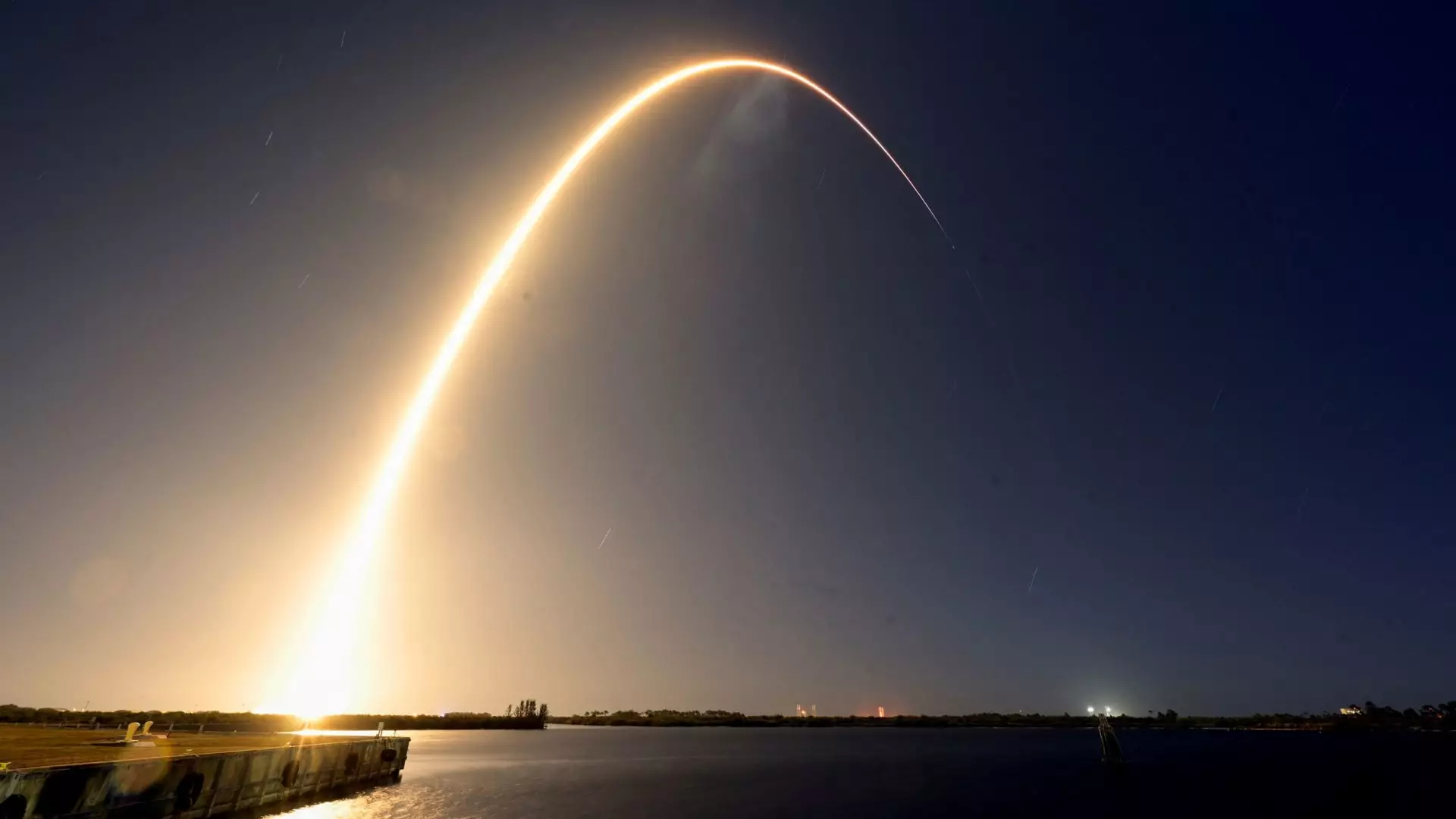Firefly Aerospace, a Texas-based company known for its innovative rocket and spacecraft manufacturing, recently achieved a significant milestone by launching its lunar cargo lander, “Blue Ghost,” aboard SpaceX’s Falcon 9 rocket. This remarkable event took place early Wednesday in Florida and heralds the start of a 45-day voyage aimed at delivering essential payloads to the Moon. Firefly’s foray into lunar services reflects a growing trend among private companies exploring opportunities in space, particularly under NASA’s collaborative initiatives.
Over the past few years, Firefly Aerospace has made a concerted effort to diversify its capabilities beyond its primary business of launching satellites with its Alpha rockets. This shift has led them to embrace the nascent lunar economy, which is quickly evolving thanks to increasing interest and investment in extraterrestrial exploration. Firefly’s chief executive, Jason Kim, articulated his commitment to lunar exploration by emphasizing the company’s focus on executing its mission objectives effectively. He declared that the goal was not only to touch down softly on the Moon’s surface but also to lay the groundwork for humanity’s future presence on our celestial neighbor.
The Blue Ghost Lander: Design and Objectives
Firefly’s lunar lander stands approximately 7 feet tall and is aptly named after a rare species of firefly indigenous to the United States. With a budget of $101 million as part of a NASA contract, the Blue Ghost is set to carry ten government and commercial payloads, making it a critical contributor to the agency‘s broader goals. This mission marked the third endeavor under NASA’s Commercial Lunar Payload Services (CLPS) program, which seeks to establish a steady cadence for delivering scientific instruments and cargo to the Moon.
NASA’s CLPS program is a significant leap forward in creating an ecosystem for commercial partnerships in lunar exploration. By utilizing the facilities and resources available through private companies, NASA aims to enhance its Artemis crew program, which is geared toward returning humans to the Moon. Firefly’s Blue Ghost mission comes on the heels of similar efforts by other companies, such as Astrobotic and Intuitive Machines. While Astrobotic’s initial mission faced setbacks, Intuitive Machines successfully landed its lander, although it tipped over upon landing, showcasing the inherent challenges associated with lunar missions.
Milestones and Future Prospects
Firefly Aerospace has established 17 milestones for the Blue Ghost mission, with a focus on demonstrating operational success as the mission progresses. Recent updates confirm that the mission has cleared five of these milestones successfully, including launch and in-orbit spacecraft testing. The anticipated landing on March 2 is set to take place in the Mare Crisium basin on the near side of the Moon. Following the landing, Firefly aims to operate the lander for an entire lunar day—equivalent to around two Earth weeks—alongside additional operations during the lunar night.
The Lunar Economy: A New Frontier
As the race for lunar exploration gains momentum, the space industry is witnessing a surge in entrepreneurial ventures aimed at capitalizing on the wealth of opportunities presented by the Moon. Following the recent launch, Firefly found itself in both excitement and competition, as its Blue Ghost mission joined Japanese company ispace on the same journey. This collaborative spirit symbolizes a growing trend wherein private enterprises seek to harness shared resources to achieve ambitious goals.
Firefly Aerospace’s mission is more than just a technological feat; it embodies the collective ambition of various private entities and governmental organizations to establish a sustainable presence on the Moon. As plans crystallize for further lunar missions, with aspirations for participation from up to five U.S. companies by 2025, a new era of space exploration is dawning. The success of these missions could pave the way for innovative applications, scientific discoveries, and the eventual colonization of our neighboring celestial body. Firefly Aerospace is at the forefront of this movement, making strides toward securing humanity’s foothold in space.

